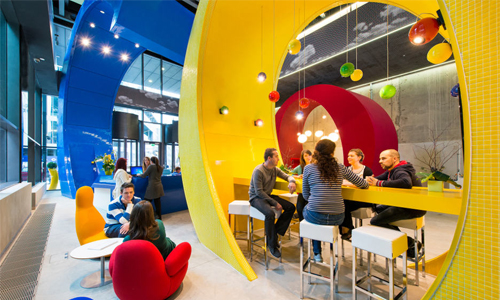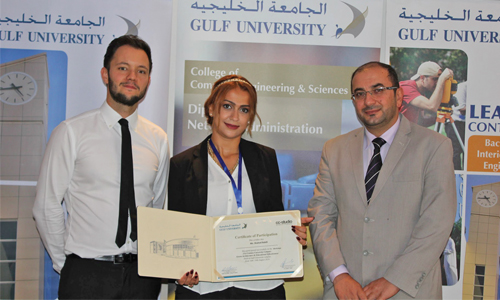When architecture embraces nature
Manama : Learning from nature and finding ways to incorporate its resourcefulness on similar architectural designs in campus can improve the students performance, according to Danny van Kessel, a renowned architect from Amsterdam.
He was speaking at a workshop on the ‘Influence of Campus design on learning environment’, organised by the Gulf University featuring students and professional architects. The workshop, first of its kind in Bahrain, offered students the opportunity to work on reshaping and redesigning their work environment.
“Architecture has the power improve students health and wellbeing by designing their work environment. We can design spaces that students enjoy and feel comfortable with thereby improving their performance,” Danny van Kessel said in an interview to Balqees Akram, a Gulf University student.
The combination of sun shading and carefully choosing plants in terms of light and heath conditions could be the answer to the problems caused by the hot and dry climate in the Kingdom, he said referring the architectural design of ‘Starbucks’ as an example. He also called for including nature as a part of the design curriculum.
“If the university offers a design oriented programme, studying plants could be part of the curriculum. Plants have so many great effects on humans and their living environment that shouldn’t stop a student (or a university for that matter) to consider them part of a design curriculum, he told. The architect also welcomed the decision made by the Gulf University in remodelling its campus with this concept.
From various approaches to effectively design campuses discussed at the workshop what seemingly suited best for Bahrain are ‘sun shading’ and the ‘stack effect of air’.
“Sun shading lowers the temperature of the air surrounding a building. A void in a building can create a stack effect where warm air goes to the top while colder air is sucked towards the bottom of the space. This would create fantastic exterior aesthetics as well as generous interior spaces.”
Making the educational environment less formal would positively affect the students life, Danny stated. “This trend has been picked up by several businesses throughout the world. Google, for example, integrates spaces in all their buildings that focus only on an informal atmosphere. This informality seems to be the exact thing that the students missed in most universities. They find this informality at coffee shops like Starbucks,” he stated.
The expert also briefed on tips to make university life healthy for students through architecture and interior designing
“We always try to make a healthy environment a step further by incorporating plants in our design. We select specific types of plants according to their purifying abilities. In a typical house, about 6 normal size plants have the same effect as an air purifying device. Research has shown that plants reduce stress and improve concentration as well.”
“Since a lot of buildings are built out of concrete in Bahrain, this is something that has to be taken very seriously.”
Danny with a participant at the workshop
Related Posts




